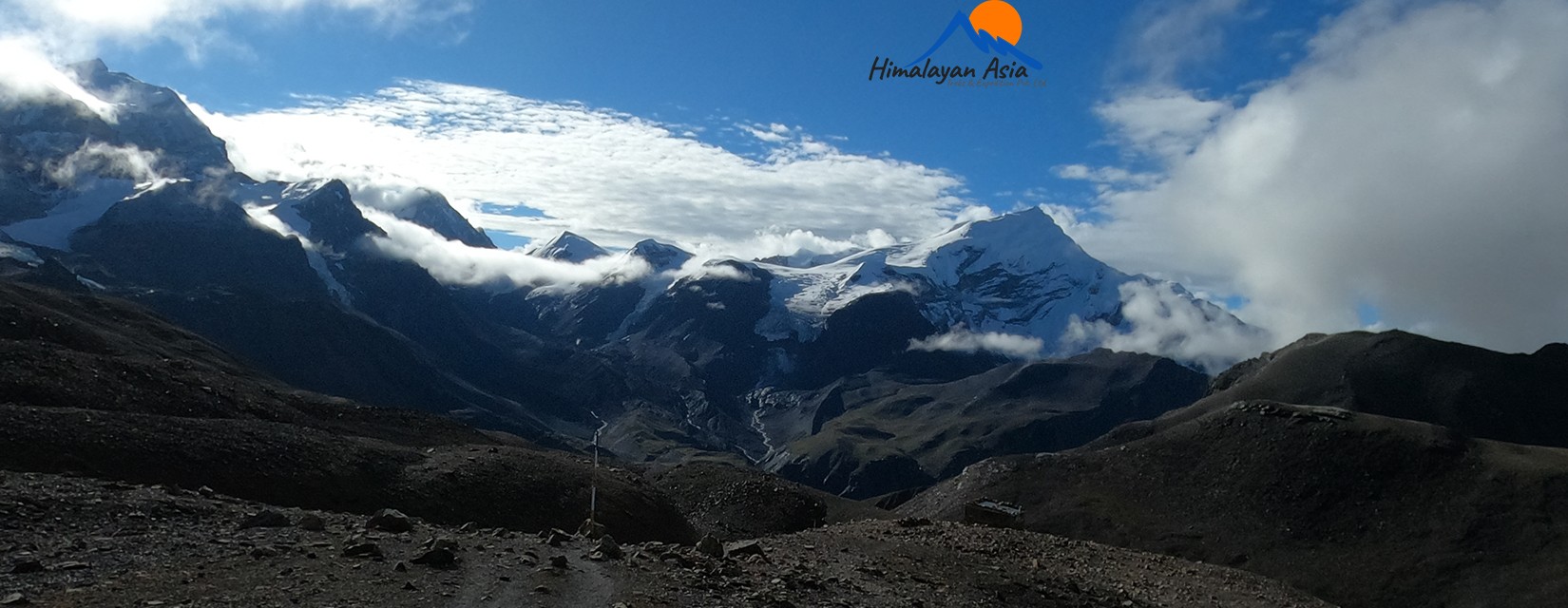About Annapurna Circuit with Tilicho Lake Trek | Himalayan Asia Treks
Annapurna Circuit with Tilicho Lake Trek
The Annapurna Circuit Trek with Tilicho Lake is a breathtaking adventure that takes trekkers through the stunning landscapes of the Annapurna in Nepal. The iconic trek combines the grandeur of the Annapurna Circuit with the serene beauty of Tilicho Lake. The Trek offer a diverse and enriching experience for nature enthusiasts and hikers. The Annapurna Circuit Trek with Tilicho Lake itinerary typically spans around 15 days, allowing trekkers to immerse themselves in the culture and natural wonders of the region.
The Annapurna Circuit with Tilicho Lake Trek, organized by Himalayan Asia Treks and Expedition Pvt Ltd, offers an unparalleled trekking experience through the stunning landscapes of the Annapurna region. This trek combines the classic Annapurna Circuit route with a detour to Tilicho Lake, one of the highest lakes in the world. The 16-day itinerary encompasses diverse terrains, from lush subtropical forests to arid high-altitude landscapes, allowing trekkers to immerse themselves in the rich culture of local communities. The trek is well-structured, with detailed maps provided to guide adventurers through each segment, including the Tilicho Lake trek, which can be completed in just 5 days. Annapurna Circuit with Tilicho Lake Trek Costs are competitive, making this trek an accessible option for those seeking adventure in the majestic Himalayas. With breathtaking views, a well-planned itinerary, and experienced guides, the Annapurna Circuit with Tilicho Lake Trek is recognized as one of the best trekking experiences in Nepal.
Along the way, adventurers traverse lush forests, charming villages, and high mountain passes, with the highlight being the visit to Tilicho Lake. The Trek is one of the highest lakes in the world. Additionally, some variations of this trek incorporate a side trip to Poon Hill, a vantage point renowned for its panoramic sunrise views over the Annapurna and Dhaulagiri mountain ranges. Whether you're seeking a challenging and rewarding journey or a shorter and more accessible adventure, the Annapurna Circuit Trek with Tilicho Lake offers an unforgettable experience for all trekkers.
Annapurna Circuit with Tilicho Lake Trek starts right from Besisahar as Annapurna Circuit Trek, which matches along the Marshyangdi River, with great views of Manaslu and Himal Chuli to the east. This magnificent Trekking leads you to the fine village inhabited by an honest diversity of individuals from different ethnic groups, offering spectacular and majestic views of the white Himalayas. Annapurna Circuit with Tilicho Lake Trekking, Tilicho Lake collects the glacial melt of the whole northern slopes of Annapurna and Thorung Peak. The Trek claimed absolutely the only lake on the planet. In 2001, Hindu pilgrims from around the world flocked to the lake, convinced it was a holy spot mentioned within the Ramayana - a sacred book of the Hindus.
Annapurna Circuit with Tilicho Lake Trek route offers a combined nature with lush, fertile farming lands, vast stands of undisturbed natural forest, and a mix of various ethnic inhabitants. You've got got got a diverse range of experiences that creates this area one of the foremost satisfying trekking destinations in Nepal. The fact that the central Himalayan range runs south of the border with Tibet means the world's northern parts are within the world. These are considerably drier than the southern slopes of the mountains. If you're thinking of doing the Annapurna Circuit with Tilicho Lake Trek, it's worthwhile considering a side trip to Tilicho Lake, 5200m.
Himalayan Asia Treks have customized this package because it's essentially equivalent to Annapurna Circuit Trek. This trek is from Manang; rather than taking the valley north to Tanki Manang and Yak Kharka, this route goes to the central valley to the west, passes through the Khangsar Village (The Last Village of Nepal) in Annapurna Circuit, and treks up to Tilicho lake. We visit Yak Kharka and then up to the pass of Thorung La at an elevation of 5416 meters.Tilicho Lake is the destination of 1 of the best popular side hikes of the Annapurna Circuit Trek. The walk takes additional 3–4 days for hiking to Tilicho Lake. The final approach to the lake is completed during each day hike from the hotel at Tilicho Base Camp. Annapurna Circuit with Tilicho Lake Trek is among the sole Circuit Treks in Nepal. You'll learn various things like culture, Thorung La Pass, Tilicho Lake, Muktinath Temple, and Buddhist culture.
Things to know before Annapurna Circuit with Tilicho Lake Trek
How Difficult is Tilicho Lake Trek?
The Tilicho Lake Trek is considered challenging due to its high altitude and steep ascents. The trek reaches an elevation of about 4,919 meters (16,138 feet) at Tilicho Lake, which can lead to altitude sickness if you're not acclimatized. The trek can be rough and rocky, requiring a good level of fitness and trekking experience. Generally, it's suitable for moderately experienced trekkers.
How Hard is Annapurna Circuit Trek?
The Annapurna Circuit Trek is also regarded as a challenging trek. It involves significant elevation gain, reaching a maximum altitude of about 5,416 meters (17,769 feet) at Thorong La Pass. The trek typically lasts 12 to 20 days, depending on your pace and itinerary, and includes diverse terrain, varying weather conditions, and long daily walking hours. Proper preparation and physical fitness are crucial.
Can a Beginner Do Annapurna Circuit?
While it's possible for beginners to attempt the Annapurna Circuit, it's recommended to have a good level of fitness and some prior trekking experience. If you're new to trekking, consider doing shorter and less demanding treks first to build your endurance and acclimatization skills. Joining a guided tour can also provide additional support and safety.
How Much Water Do You Need to Carry on the Annapurna Circuit?
It's essential to stay hydrated while trekking the Annapurna Circuit. You should aim to drink about 3 to 4 liters of water per day, depending on your activity level and climate. Many trekkers carry a water purification system (like tablets or filters) to refill their water bottles at various points along the route. It’s advisable to start each day with at least 1 liter of water and refill as needed throughout the day.
What is the Annapurna Circuit Trek with Tilicho Lake?
The Annapurna Circuit Trek with Tilicho Lake is a popular and challenging trekking route in Nepal. It combines the classic Annapurna Circuit with a detour to Tilicho Lake, which is one of the highest lakes in the world. The trek takes you through diverse landscapes, including lush valleys, remote villages, alpine meadows, and high mountain passes, offering breathtaking views of the Annapurna and Dhaulagiri mountain ranges.
How long is the Annapurna Circuit Trek with Tilicho Lake?
The duration of the Annapurna Circuit Trek with Tilicho Lake can vary depending on the itinerary and individual preferences. On average, it takes around 18 to 21 days to complete the entire trek, including acclimatization and rest days. The actual trekking distance is approximately 230 kilometers (140 miles).
What is the best time to do the Annapurna Circuit Trek with Tilicho Lake?
The best time to undertake the Annapurna Circuit Trek with Tilicho Lake is during the spring (March to May) and autumn (September to November) seasons. These months offer stable weather, clear skies, and moderate temperatures, providing ideal conditions for trekking. However, it's important to note that weather conditions in mountainous regions can be unpredictable. So it's always recommended to check the weather forecast before embarking on the trek.
Is a permit require for the Annapurna Circuit Trek with Tilicho Lake?
Yes, permits require for the Annapurna Circuit Trek with Tilicho Lake. There are two main permits you need to obtain: the Annapurna Conservation Area Permit (ACAP) and the Trekker's Information Management System (TIMS) card. These permits are necessary to enter and trek within the Annapurna Conservation Area. You can obtain these permits from the Nepal Tourism Board or through authorized trekking agencies in Kathmandu or Pokhara.
What is the level of difficulty for the Annapurna Circuit Trek with Tilicho Lake?
The Annapurna Circuit Trek with Tilicho Lake consider a strenuous trek and requires a good level of physical fitness and prior trekking experience. The route involves long daily walks, steep ascents and descents, and crossing high mountain passes, such as Thorong La Pass (5,416 meters/17,769 feet). Altitude sickness is also a concern, so proper acclimatization and gradual ascent are crucial. It's recommend to engage in regular physical exercise and prepare well in advance for the trek.
Are tea houses or lodges available along the Annapurna Circuit Trek with Tilicho Lake?
Yes, there are tea houses or lodges available along the Annapurna Circuit Trek with Tilicho Lake. The route is pass through several villages where trekkers, so can find accommodation and meals. These tea houses offer basic facilities, such as dormitory-style rooms or private rooms with shared bathrooms. However, it's advisable to carry a sleeping bag and make advance bookings during peak trekking seasons to ensure availability.
Some essential items to pack for the Annapurna Circuit Trek with Tilicho Lake include:
Sturdy trekking boots
Warm clothing layers (including a down jacket)
Moisture-wicking base layers
Trekking pants
Hat and gloves
Sunglasses and sunscreen
Sleeping bag
Backpack
Trekking poles
Water bottle and water purification tablets
First aid kit
Snacks and energy bars
Headlamp or flashlight
Camera
It's important to pack light while ensuring you have all the necessary items for comfort and safety during the trek.
Do I need a guide and porter for the Annapurna Circuit Trek with Tilicho Lake?
While it's mandatory to have a guide or porter for the Annapurna Circuit Trek with Tilicho Lake. It's highly recommended, especially if you are inexperienced or unfamiliar with the region. A guide can provide valuable assistance in navigation, offer insights into the local culture and geography, and ensure your safety throughout the trek. Hiring a porter can also help lighten your load, allowing you to focus on enjoying the trek. If you prefer a more independent trekking experience, it's still advisable to carry detailed maps and have a good understanding of the route beforehand.



